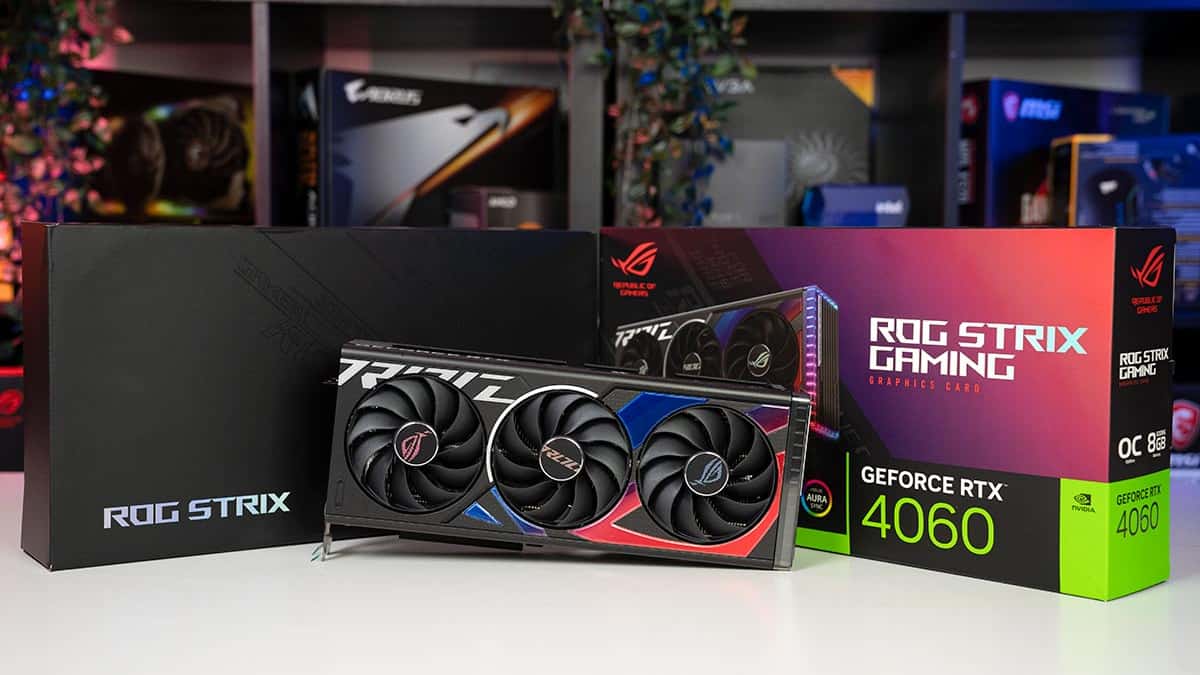PS5 Pro GPU vs Nvidia RTX 4060 – how do they compare so far?

Table of Contents
Comparing a PC and a console is a little like comparing apples and oranges, they both stave off the hunger we have for gaming, but they do it differently. That said, the PS5 Pro has now launched and with all of its upgrades over the original, users are questioning how it stacks up against PC hardware. Let the “PS5 Pro killer PC builds” ensue.
According to Sony, the new Pro console contains 67% more compute units and 28% faster memory than the standard PS5. This results in a very respectable claim of 45% faster rendering for a smoother experience. There is a lot of talk from Sony, but how does this stack up against the RTX 4060? Well, we need to do some math.
Prime Day may have closed its doors, but that hasn't stopped great deals from landing on the web's biggest online retailer. Here are all the best last chance savings from this year's Prime event.
- Sapphire Pulse AMD Radeon™ RX 9070 XT Was $779 Now $719
- AMD Ryzen 7 7800X3D Processor Was $449 Now $341
- Skytech King 95 Ryzen 7 9800X3D gaming PC Was $2,899 Now $2,599
- LG 77-Inch Class OLED C5 TV Was $3,696 Now $2,996
- AOC Laptop Computer 16GB RAM 512GB SSD Was $360.99 Now $306.84
- Lexar 2TB NM1090 w/HeatSink SSD Was $281.97 Now $214.98
- Apple Watch Series 10 GPS+ Smartwatch Was $499.99 Now $379.99
- AMD Ryzen 9 5950X processor Was $3199.99 Now $279.99
- Garmin vívoactive 5 Smartwatch Was $299.99 Now $190
*Prices and savings subject to change. Click through to get the current prices.
The standard PS5 has 36 CUs, resulting in 2,304 Shading Units, says TechPowerup, which is about equivalent to an RX 6700 from AMD, the PS5 Pro apparently has 67% more, so 36 x 1.67 is ~60, likely making 3,840 shading units (if the ratios are still the same) Which is about equivalent to the RX 6800. So that means it’s the RTX 4060 vs the RX 6800, right? Not exactly.
Following the announcement, it has been assumed that the PS5 Pro GPU is likely RDNA 3 based, according to sources such as Wccftech and PCGamer, the latter listing it as a “60 CUs RDNA 3 GPU”. At the specifications we calculated, this could make it closer to the 7800 XT. That would better justify the steep $699 price tag.
PlayStation 5 Pro

CPU
8 core / 16 thread AMD Zen 2
GPU
RDNA-based graphics engine
Memory
16GB GDDR6
RAM
2GB DDR5
Storage
2TB SSD
TDP
390W
WiFi standard
WiFi 7
Shop on Amazon
CHECK PRICEASUS ROG Strix GeForce RTX 4060 OC

GPU
AD107 die
CUDA cores
3,072
VRAM
8GB GDDR6 VRAM
Bandwidth
272 GB/s
Memory bus width
128-bit memory bus
Base clock speed
1830 MHz
Boost clock speed
2670 MHz
Shop on Amazon
CHECK PRICEPS5 Pro vs. RTX 4060
Since we don’t know what exactly is going to be powering the PS5 Pro just yet, but the evidence does appear to suggest that the PS5 Pro GPU will be closer to the RX 6800 and the RX 7800 XT, we can use these as a guideline of comparison – at least for the time-being.
The following is each GPU results in Cyberpunk 2077 via our in-house GPU testing:
| GPU | CP 2077 AVG FPS | CP 2077 99th % FPS |
|---|---|---|
| RTX 4060 | 77 | 60 |
| RX 6800 | 109 | 82 |
| RX 7800 XT | 140 | 102 |
As we can see from these results, the RX 6800 and the 7800 XT are leaps and bounds ahead of the RTX 4060. Though the actual PS5 Pro chip will not be a full-sized dedicated GPU chip, it’ll likely be more miniaturized and optimized for power consumption, it should still be able to stack up against a desktop 4060.
Where the PS5 Pro chip loses in power delivery optimizations, it’ll gain more from the fact that games are optimized for that specific hardware. Of course, this is just one game, but it serves as a snippet of what we can expect out of the PS5 Pro when it launches.
Sony also boasts that the Advanced Ray Tracing that has been incorporated can “at times” cast rays at triple the speeds of the current PS5. Not to mention the introduction of PSSR, Sony’s AI-driven upscaler.
Console hardware is more optimized
Because of the limited hardware on consoles, developers can optimize games to work on the hardware incorporated in the PS5 Pro, resulting in better performance. This cannot be said for PC gamers, as there are so many hardware combinations out there, that developers cannot optimize games for every combination out there, so they take a more general approach.
A well-optimized game can make all the difference, probably why PC ports have been so bad lately, it’s just easier to optimize for the consoles and appease that market. But that’s a discussion for another article.
How will the GPU be kept cool?
The standard PS5 has one chonky single barrel fan design that routes air over the components, as there is no confirmed change on the design of the PS5 Pro cooling-wise, we can assume that this will be the setup in place. The RTX 4060 also has single fan cards, but that fan is designed to cool just the GPU, and it doesn’t have to worry about cooling an entire system.
From this, it can be assumed that the GPU in the PS5 Pro may be tuned down slightly, as the TDP for a standard 4060 is 115W, whereas the entire TDP for the PS5 was 180W. It’s unlikely that the rest of the PS5 Pro (if the TDP is similar) will be powered on just 65W.

